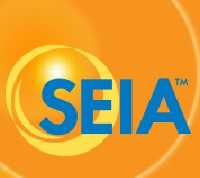American Institute of Architects and Department of Energy Introduce Online Reporting Tool to Track Data in Design Project Portfolios
Number of firms reporting their portfolio data has increased by 33 percent
Atlanta – May 15, 2015 – (RealEstateRama) — The American Institute of Architects (AIA) has partnered with the U.S. Department of Energy to create the 2030 Design Data Exchange (DDx), an online monitoring, reporting and research tool for architecture firms participating in the AIA 2030 Commitment program.
This online portal can be accessed here and will provide committed firms with access to their own unique database where they can submit yearly project data, compare projects with similar submissions from other committed firms, and track energy performance across their organization with ease.
“Being able to access the data and see immediate results on how our projects are performing created a bit of a ‘wow factor’ that has gotten people within the firm excited and more engaged in a larger discussion of how all of our projects can reduce their energy consumption,” said Melissa DeStout, project architect with Perkins Eastman. “The graphics in the DDx tool certainly helped spark conversations that have opened our eyes even more to the different types of projects and results we have been producing across both our domestic and international offices.”
The DDx comes with numerous functionality enhancements to the previous reporting method, such as continuity in tracking projects across multiple years and improvements in firm portfolio analysis. An improved user interface will make it easier to enter data and navigate through the tool, and previously reported data on projects submitted in 2013 and 2014 will carry over to the new database. The interface now allows firms to anonymously research how their projects are predicted to perform compared to similar projects across the AIA 2030 Portfolio.
“We are especially looking forward to tapping into the research function in the DDx so that we can get a much better sense of how our projects are performing against comparable buildings in the marketplace, which provides a great benchmarking capability,” said Teresa Rainey, PE, Director of High Performance Design at Skidmore, Owings & Merrill LLP. “This tool has the potential to help move the architecture profession forward as designers become aware of how their peer’s design projects are performing and some friendly competitive instincts kick in.”
The AIA 2030 DDx will eliminate that need for local spreadsheet files by providing a centralized hosted location for data entry and portfolio analysis. The new, online reporting platform is designed to interface with the Department of Energy’s Standard Energy Efficiency Data database.
“The new online offering is a great time saver from a data input standpoint and allows easy access to previous year’s reporting data. It also helps us quickly figure out our energy performance targets, whether a client wants a LEED certified building, to meet the 2030 Challenge, or to be completely carbon neutral, we can plot our roadmap to achieve our goals,” said, Beth Brant, AIA, project architect and director of sustainability for DSGN Associates, Inc. “From a new business development standpoint, this tool enables us to show how our design portfolio is performing and make a visual connection to how potential clients can reduce their energy consumption through certain design strategies.”
The total number of AIA 2030 Commitment firms that have reported their data has risen from 99 in 2013 to 132 in 2014, an increase of 33 percent. A full report detailing the gross square footage represented in the data, the number of design firms that are meeting certain carbon reduction targets and the average Predicted Energy Use Intensity reduction reported by firms will be issued later this summer.
Additional information: AIA 2030 Design Data Exchange FAQ
About The American Institute of Architects
Founded in 1857, members of the American Institute of Architects consistently work to create more valuable, healthy, secure, and sustainable buildings, neighborhoods, and communities. Through nearly 300 state and local chapters, the AIA advocates for public policies that promote economic vitality and public well-being. Members adhere to a code of ethics and conduct to ensure the highest professional standards. The AIA provides members with tools and resources to assist them in their careers and business as well as engaging civic and government leaders, and the public to find solutions to pressing issues facing our communities, institutions, nation and world. Visit www.aia.org.
Contact: Scott Frank
202-626-7467
http://twitter.com/AIA_Media













